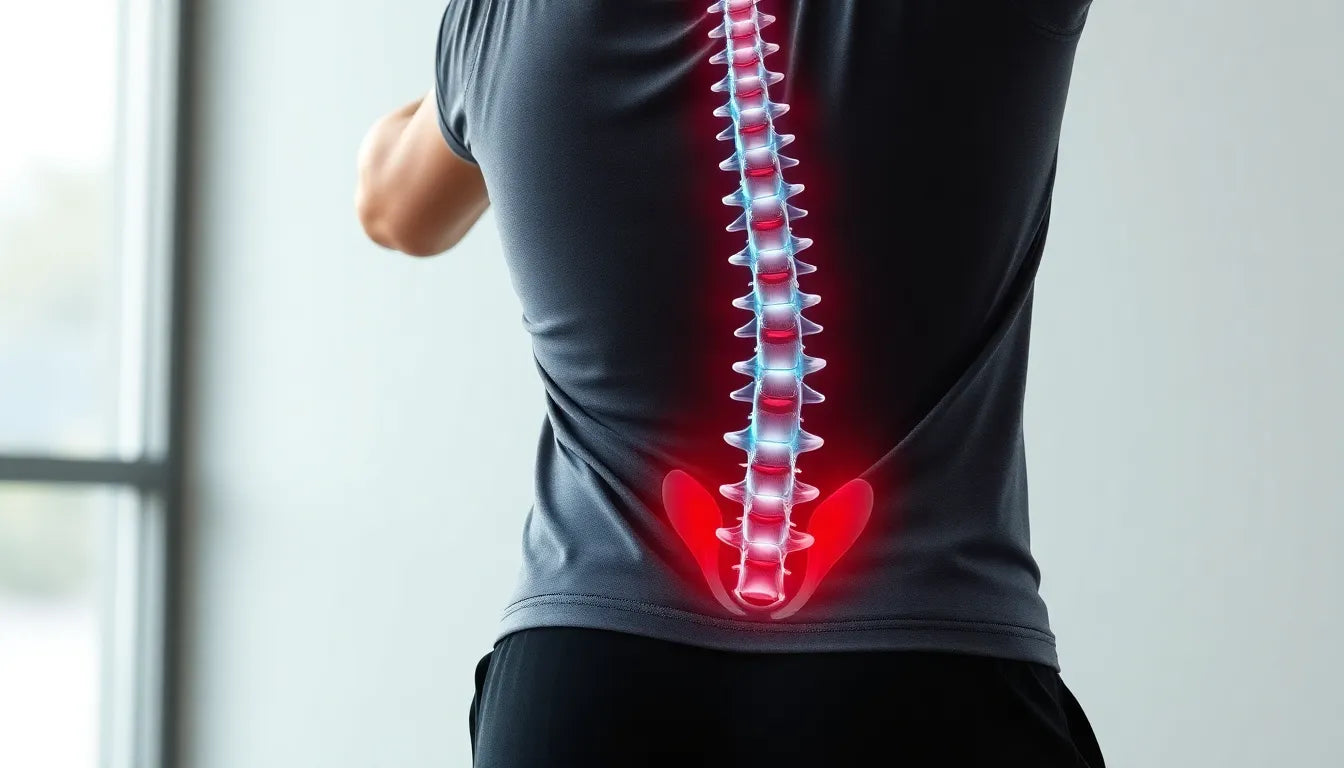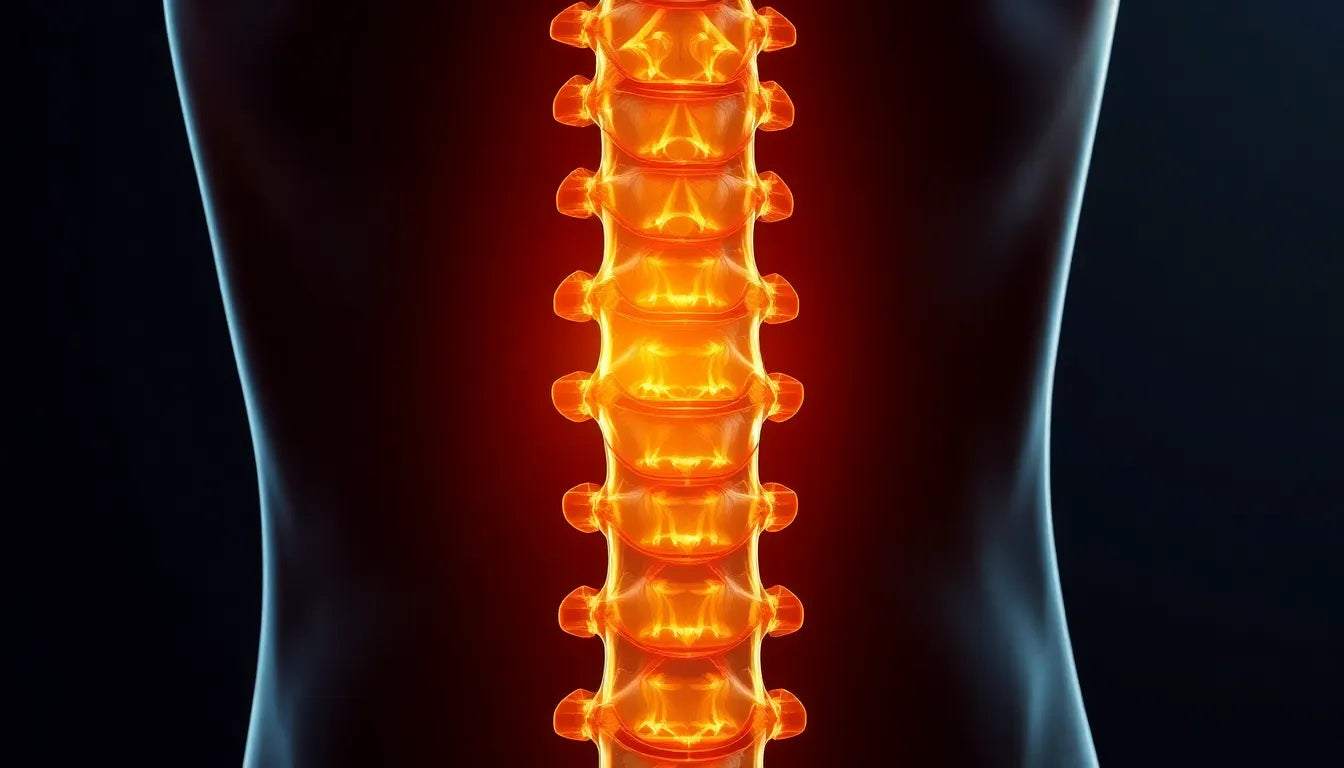Imagine waking up one morning with a stiff neck, assuming it's just the result of an awkward sleeping position. However, as the day progresses, the discomfort begins to spread, creeping into your shoulders and arms. You might dismiss it as a lingering effect of a poor night's rest, but what if it's something more serious? This scenario is all too familiar for those experiencing a herniated disc in the neck, a condition that can significantly impact your daily life if left unaddressed.
Understanding a herniated disc in the neck
A herniated disc in the neck, also known as a cervical disc herniation, occurs when one of the cushioning discs between the vertebrae in the cervical spine ruptures or slips out of place. This condition can cause significant discomfort and a range of symptoms that may interfere with your ability to perform everyday tasks. The cervical spine, located in the neck, is particularly vulnerable due to its flexibility and the critical role it plays in supporting the head and facilitating movement. When a disc herniates, it can press on nearby nerves, leading to pain and other neurological symptoms.
Understanding the symptoms of a herniated disc in the neck is crucial for seeking timely medical advice and avoiding potential complications. While neck pain is a common complaint, recognizing the specific signs of a cervical herniation can help differentiate it from other conditions and guide appropriate treatment.
Purpose of this post
The aim of this post is to help you identify the symptoms of a herniated disc in the neck and understand how this condition can affect your daily activities. By recognizing the telltale signs, you can seek medical intervention early and potentially prevent further damage. Whether you're experiencing discomfort or simply want to be informed, this post will provide valuable insights into the symptoms and implications of a herniated disc in the neck.
Recognizing the symptoms of a herniated disc in the neck
Understanding the symptoms of a herniated disc in the neck is vital for early detection and treatment. The primary symptoms can vary widely in intensity and may include:
- Neck pain: This can manifest as localized, aching, sharp, or burning sensations. The pain might be constant or may occur sporadically, often worsening with specific movements or positions.
- Radiating pain: Pain can extend beyond the neck, affecting the shoulders, arms, hands, and fingers. This radiating pain often resembles an electric shock, indicating nerve involvement.
- Numbness and tingling: These sensations typically occur in the upper extremities, such as the arms and hands, and can be a sign of nerve compression.
- Muscle weakness: Weakness may develop in the shoulders, arms, and hands, making it challenging to perform tasks that require strength or dexterity.
Secondary symptoms can also emerge, adding to the complexity of the condition:
- Headaches: These may originate from tension in the neck muscles or nerve irritation.
- Neck stiffness: Reduced range of motion and stiffness can limit your ability to turn your head or perform everyday activities.
- Muscle spasms: Spasms in the shoulders or arms can occur as a response to nerve irritation or inflammation.
- Severe cases: In some instances, a herniated disc may lead to difficulty walking, balance problems, and coordination issues due to spinal cord compression.
Symptom variation by disc location
The symptoms of a herniated disc can differ depending on the specific location of the herniation within the cervical spine. Here's a breakdown of how symptoms may vary by disc location:
- C4-C5 herniation: Typically results in shoulder pain and possible weakness in the upper arm.
- C5-C6 herniation: Often causes weakness in the biceps and wrist, along with numbness along the thumb side of the hand.
- C6-C7 herniation: May lead to weakness in the triceps and fingers, with pain traveling to the middle finger.
- C7-T1 herniation: Can result in reduced handgrip strength and numbness along the little finger.
Visualizing the cervical spine
Visual aids, such as diagrams or illustrations, can be incredibly helpful in understanding the anatomy of the cervical spine and the implications of a herniated disc. These visuals typically highlight the various disc locations and the corresponding symptoms, offering a clearer picture of how nerve compression can lead to the diverse range of symptoms experienced.
By recognizing the specific symptoms associated with a herniated disc in the neck and understanding how they relate to the location of the herniation, individuals can better assess their condition and seek appropriate medical advice. Early intervention can prevent further complications and improve quality of life, making it crucial to pay attention to these telltale signs. In the next section, we will explore the impact of these symptoms on daily life and hear from individuals who have navigated this challenging condition.
Living with a herniated disc in your neck
Experiencing a herniated disc in the neck can significantly affect daily life, influencing everything from routine tasks to overall well-being. The symptoms can make simple activities like driving, working, or even carrying groceries challenging. For instance, the pain and muscle weakness might make it difficult to maintain a firm grip on the steering wheel or comfortably sit at a desk for extended periods. Similarly, the numbness and tingling in the hands can complicate tasks that require precision, such as typing or handling small objects.
Consider the story of Jane, who woke up one morning with a stiff neck that quickly escalated into severe discomfort radiating down her arm. Initially dismissing it as a temporary issue, Jane soon found herself struggling with everyday activities. Tasks like lifting her toddler or even turning her head to check her blind spot while driving became daunting challenges. Her experience underscores the importance of recognizing the symptoms early and seeking medical advice to manage the condition effectively.
Understanding how a herniated disc in the neck impacts daily activities is crucial for managing the condition. It highlights the need for adjustments in routine and lifestyle to accommodate the limitations imposed by the symptoms. For many, this might mean modifying work environments, adopting ergonomic practices, or seeking physical therapy to strengthen and support the affected area.
Frequently Asked Questions
What causes a herniated disc in the neck?
A herniated disc in the neck can result from several factors. Aging is a common cause, as the discs naturally lose flexibility and elasticity over time, making them more prone to injury. Other causes include sudden trauma, such as whiplash from a car accident, or repetitive strain from activities that place excessive stress on the cervical spine.
How is a herniated disc diagnosed?
Diagnosing a herniated disc typically involves a combination of a physical examination and imaging tests. During the physical exam, a healthcare provider will assess your symptoms, reflexes, and muscle strength. Imaging tests, such as an MRI, are often used to confirm the diagnosis and pinpoint the exact location of the herniation.
Can a herniated disc heal on its own?
In some cases, a herniated disc can heal naturally over time as the body reabsorbs the displaced disc material. However, this process can take several weeks to months, and symptoms may persist or worsen without appropriate treatment. Medical intervention, such as physical therapy or medication, may be necessary to manage symptoms and promote healing.
What are the treatment options?
Treatment for a herniated disc in the neck varies depending on the severity of the symptoms and the individual's overall health. Conservative treatments, such as physical therapy, pain medication, and lifestyle modifications, are often the first line of defense. In more severe cases, surgical intervention may be required to relieve pressure on the affected nerves.
When should I see a doctor for neck pain?
It's important to seek medical attention if you experience persistent neck pain, especially if it's accompanied by radiating pain, numbness, or weakness in the arms or hands. Additionally, if you notice symptoms like difficulty walking or balance issues, it's crucial to consult a healthcare provider promptly to prevent further complications.
Recognizing the symptoms of a herniated disc in the neck and understanding their impact on daily life is essential for seeking timely medical intervention and improving quality of life. If you suspect you may have a herniated disc, don't hesitate to reach out to a healthcare professional for an evaluation and guidance on the best course of treatment.
Sources
- Spine-health.com. (n.d.). "Neck Pain: Symptoms, Causes, and Diagnosis."
- Florida Surgery Consultants. (n.d.). "Herniated Disc Symptoms."
- Penn Medicine. (n.d.). "Herniated Disc."
- Advanced Spine Center. (n.d.). "Herniated Disc Symptoms by Location."
- WebMD. (n.d.). "Cervical Herniated Disc."
- Weill Cornell Medicine. (n.d.). "Herniated Disc."


















